The plan for today was to visit the city of Suzhou, which is just a 30 minutes train ride from the city of Wuxi. After some discussions along the way, the main sights of Suzhou were highlighted, they are Hu Qiu Shan (虎丘山), Han Shan Si (寒山寺) and Zhou Zhuang (周庄). From the guide books, Zhou Zhuang is around an hour out of Suzhou, so we decided to go for it first and come back to Suzhou after the Zhou Zhuang side trip.
We arrived at Suzhou around 10.30am and started looking for the best mode of transport to get to Zhou Zhuang. After inquiring around, we settled for the standard public bus package to Zhou Zhuang which cost 100RMB (inclusive of single trip and entry ticket). The bus departed at 11.40am and arrived at 1pm.
Maps can be bought at 4RMB each the moment we left the bus station. It shows the main entrance to Zhou Zhuang to be somewhere 1km away so we decided to walk there.
Along the way, we stopped by a local restaurant to have our lunch. We went for the set lunch which cost 180 RMB for 10 dishes, including the local specialty – Wan San Ti (万三蹄) which is actually Pork’s Leg. Lunch wasn’t that memorable as one of our travel mates has a bug in his soup.
We left the restaurant and proceeded up the road to the bridge which separates Zhou Zhuang from the main road. A large pagoda is the first sight that greeted us when we arrived at Zhou Zhuang. Next to the pagoda are actually hotels and accommodations for visitors to stay over.
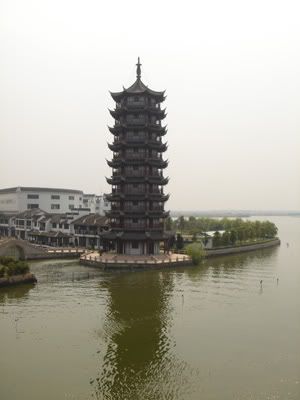
Up the road and we arrived at the main entrance which features the village name ‘Zhou Zhuang’ at the top.

The village has quite a good mix of ‘traditional’ architecture and buildings. But the shops that occupy in these buildings really make it an eye-sore. It shows the touristy nature of the Zhou Zhuang village.
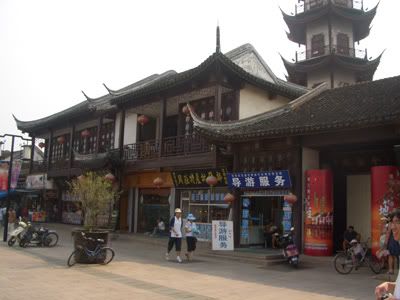
Once we are in the actual village, the clobber pathways, meandering rivers, arching bridges and traditional houses are the main sights. The village is still able to preserve much of its ancient charm.
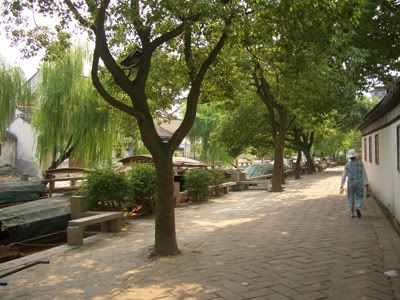
We got to our first stop in the map which is the museum of Zhou Zhuang. Museums ain't our interest really but we got fascinated by this large chess set that is placed on the floor. So here we have a go at it.
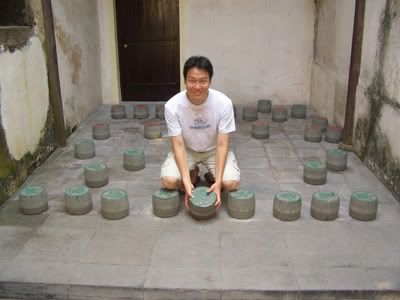
The sections of the village that is not adjacent to the rivers are dominated by narrow alleyways that links houses to houses together.

While crossing one of the many bridges, here is a good view of the river from the top.
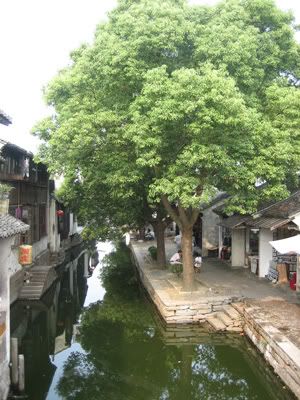
Visitors can also have the chance of catching ride on the many boats that transverse through this water village.
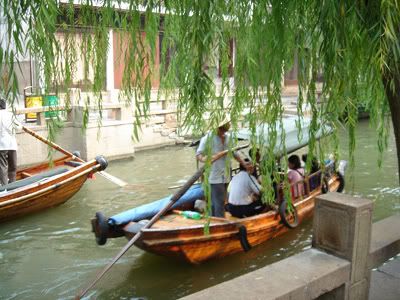
There are many bridges in Zhou Zhuang with some of them spanning a history of a few hundred years.
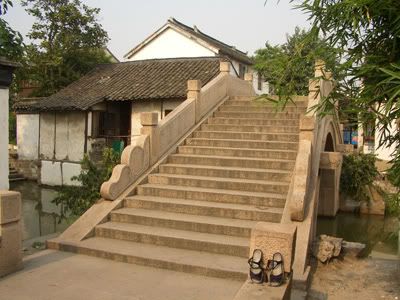
There is a large Buddhist temple (全福讲寺) at the southern tip of Zhou Zhuang which is characterised by its large expanse of spaces, bridges, pavilions and temple structures.

On the way leading to main houses of Zhou Zhuang are rows of shops. They are selling pretty much the same thing. Guess they came from the same manufacturer.
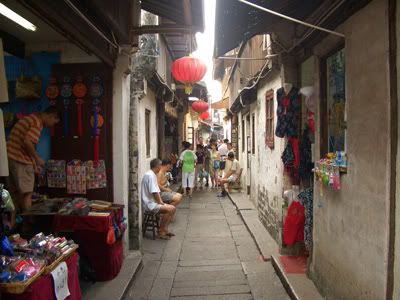
The main popular food stuff in Zhou Zhuang is the Wan San Ti (万三蹄) which can be bought from many of the shops. As we already have one of it for our lunch, looking at it again induces a nausea feeling within us.
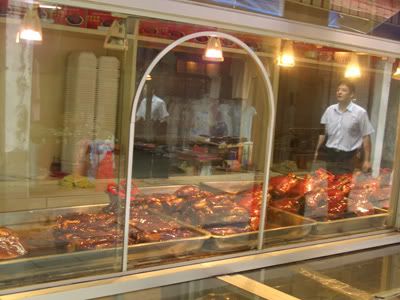
Here are one of the many traditional Chinese houses. The more famous one is the one owned by a rich Chinese merchant (沈万三) who lived during the early Ming dynasty who has traveled overseas for his trading often. The other one is owned by a government official. These houses are jammed pack with tour guides and visitors. Along the way, we got to know why the houses are designed in such a way. There are many courtyards in the houses with each serving its different purpose. Such as the outer courtyard is for visitors who wish to gain audience with the host to settle in. The second courtyard where meetings and wedding ceremonies are held. Rooms occupied both sides of the houses with a mini-pier at the backyard so the residents can travel between the village via boats.
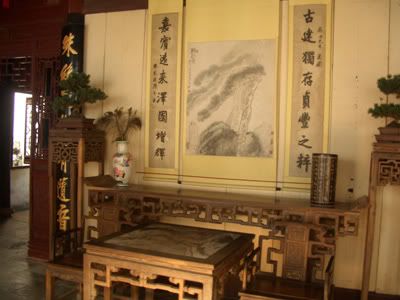
Most of the houses have their own private pier where they can travel to and fro easily using a boat. The guide mention the large expanse of water next to the pier is for boats to make turns easily.
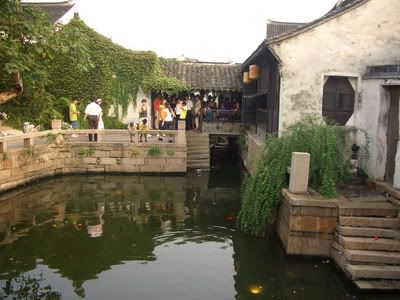
Here we have the famous twin-bridges of Zhou Zhuang.
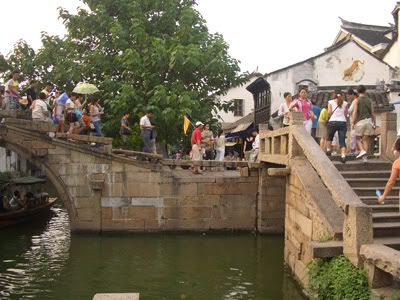
By the time we left Zhou Zhuang, it is already 4.30pm. Guess we have to scrap our Suzhou plan. The evening scene is quite captivating, so here is a quick shot of it.

When we left the entrance, the sight of the tricycle drivers prompt us to give it a try back to the bus station.
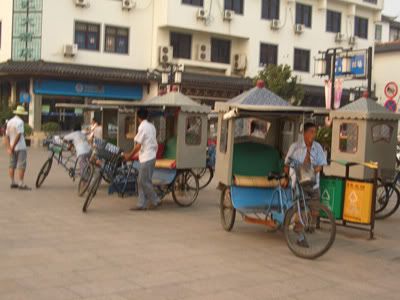
Here we go.
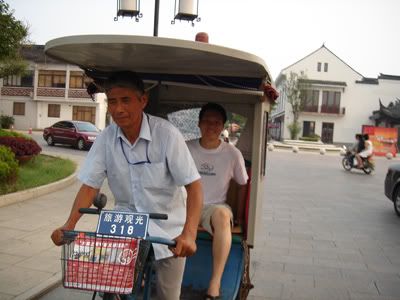
Going up the bridge requires the passengers to alight from it. I decided to give the driver an extra boost by pushing it from behind.
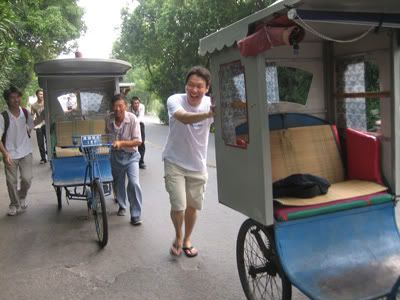
By the time we got back to the bus station, we found out the last bus back to Suzhou has just left. We have to settle for a ride to Kushan first and find a way back to Wuxi. So here is what follows, first we took the public bus which cost around RMB6.50 to Kunshan bus station, there after chartered a mini-bus which cost RMB15 to Suzhou and finally from there take the train back to Wuxi.
All in all, today has been quite an adventure in China with all decisions coming in on the spot. We took 5 modes of transport in a single day: Train, Tour Bus, Tricycle, Public Bus, Chartered Bus.